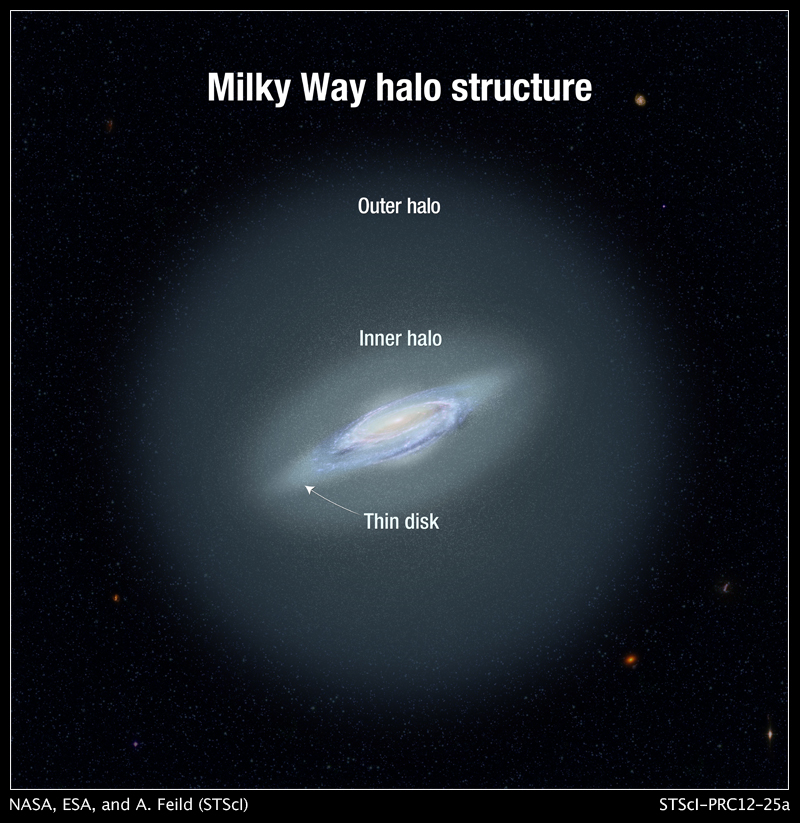
(Image Credit: NASA/ESA/STScI)
The Milky Way’s metal-poor stellar halo is mostly built up from the ancient accretion of dwarf galaxies. Studying the chemical abundances of these stars provides insights to the Milky Way’s accretion history, the formation and evolution of dwarf galaxies, first galaxies during the epoch of reionization, and early nucleosynthesis. Mapping the kinematics of these stars can recover the signature of individual accretion events and constrain the shape of the gravitational potential of the Milky Way, including the dark matter halo and the interaction with the Large Magellanic Cloud.
Instead of a random sample of halo stars, SDSS-V is targeting three extreme regions of the halo parameter space:
- the distant halo, targeting tracers that reach to 30 kpc and beyond,
- the metal-poor halo, selecting red giant stars likely to have [Fe/H] < -2, and
- the local halo, selecting stars within 2 kpc and with tangential
velocities > 150 km/s, which mostly consist of low-mass (K/M)
main-sequence stars from the Milky Way inner halo.
Cartons
mwm_halo_bb
This is a plate era “filler” carton targeting all of the “Best and Brightest” halo targets identified by Schlaufman and Casey (2014). The program associated with this carton is mwm_filler, but the alternate program associated with this carton is halo to properly link these stars to this program.
mwm_halo_bb_boss
This is the FPS-era version of the mwm_halo_bb carton, but unlike its predecessor, the program associated with this carton is mwm_halo.
mwm_halo_sm
This is a plate era “filler” carton targeting all metal-poor ([Feh/H] < -1.7) stars in Casagrande et al. (2019). Like mwm_halo_bb, the program associated with this carton is mwm_filler, but the alternate program associated with this carton is halo.
mwm_halo_sm_boss
This is the FPS-era version of the mwm_halo_sm carton, but unlike its predecessor, the program associated with this carton is mwm_halo.
Associated open fiber cartons
In DR19, a pilot for halo star selection was implemented as part of open fiber programs. The three regions were targeted as:
-
Distant Halo
- openfibertargets_nov2020_6a
- openfibertargets_nov2020_28a
- openfibertargets_nov2020_28b
- openfibertargets_nov2020_28c
-
Metal-poor halo
- openfibertargets_nov2020_5
- openfibertargets_nov2020_6b
- openfibertargets_nov2020_6c
- openfibertargets_nov2020_35a
- openfibertargets_nov2020_35b
- openfibertargets_nov2020_35c
-
Local Halo
- openfibertargets_nov2020_25
Several of these open fiber halo cartons are moved to higher priority starting in DR20, and full selection functions will be released at that time.
Cadences
During plate operations, targets could be observed with BOSS at low priority on any plate except those with the RM cadence.
In the FPS era, all spectra are taken with the low-resolution optical BOSS spectrograph, and all targets in DR19 utilize the bright_1x1 cadence.
